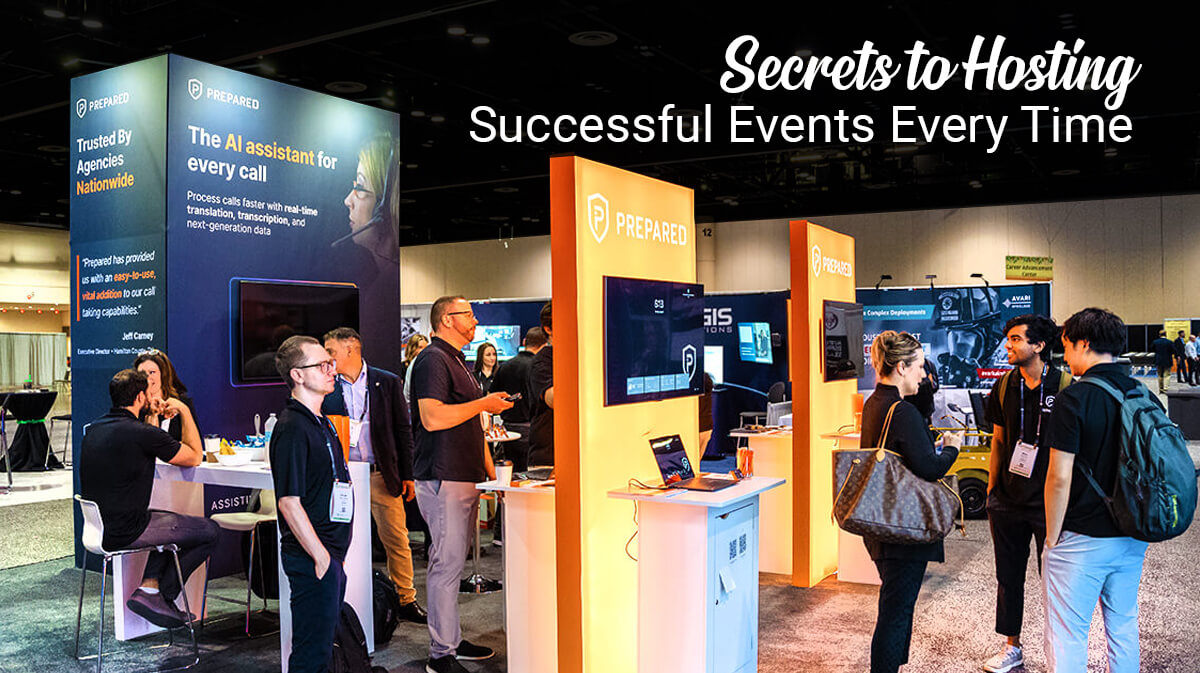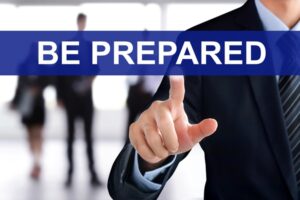
Five Essential Elements for a Successful Event Planning Strategy
Events serve as the most effective way for business to accomplish their key goals, the Event Marketing 2019: Benchmarks and Trends Report declares. Interactions on the internet are very impersonal.
By hosting an event, businesses find they can engage in face-to-face contact with potential customers, suppliers, and more to show they are human and care about those they deal with regularly.
However, failing to plan is a plan to fail, according to Benjamin Franklin. Any event, regardless of size, requires an event planning strategy to ensure it is executed smoothly from start to finish.
When this strategy isn’t developed or implemented, the event often leads to expectations not being met and worse. Following are five things to take into account when creating an event planning strategy.
 The Vision and Mission of the Event
The Vision and Mission of the Event
Every event needs to have a vision and a mission. These often align with the event goals and having them in place helps to ensure everyone understands the purpose of the function and what is trying to be accomplished. Furthermore, having the vision and mission in place helps to determine the look and feel of the event.
To select the theme of the event, consider the guest list. At times, this may be potential customers who are being presented with new products. Call in the media and provide the event with a VIP element.
In contrast, a small event requires a setting that provides an intimate feel. This is determined in part by the purpose of the event, which is a good starting point for building the vision.
Why is the event being held? Businesses may choose to host a function of this type to increase brand awareness or generate leads. Others opt to improve their customer/organization relationships by bringing all parties together in a fun way, and some companies use an event to educate their employees or prospects.
Regardless of why the event is needed, understanding the goal makes it easier to organize, measure and market the function.
Once the goal has been determined, it must be S.M.A.R.T.-specific, measurable, achievable and results-oriented. Decide which key performance indicators (KPIs) are to be used for measurement at this time.
Some find gross revenue is the best measure while others elect to make use of guest registrations. These KPIs make it easier to analyze what worked and what should be changed for future events.
One thing event organizers need to keep in mind at this time is only a few KPIs should be measured. Choosing too many often does more harm than good. Determine which metrics these are and how they are to be measured.
By establishing numeric goals early in the process, event planners can easily determine how to prioritize tasks as the planning process moves forward along with calculating the success of the event once it has taken place.
Make certain everyone involved in the planning process is aware of these metrics. Event planners may also wish to share this information with others in the organization, such as the stakeholders.
When everyone has this information, gathering resources to ensure the goals are met becomes a group project instead of being left in the hands of only a few select individuals.
 The Planning Timeline
The Planning Timeline
Every event needs a planning timeline to ensure that responsible remain on schedule. In addition, this timeline becomes of great help in coordinating different tasks that may occur days, weeks, or months before the big day.
This schedule outlines what must happen when and why, and no element of the event should be excluded from the schedule.
This schedule should continue right up to the day of the event and after, as this is of great help with logistics. For example, multiple suppliers arriving at the same time may lead to a bottleneck. By adding them into the schedule problems such as this can be avoided.
Be sure to include a notation for following up with attendees to determine where the success was an event or where planners failed to meet expectations. Event photos and thank you notes should also be incorporated into the timeline.
Any element related to the event needs to be included in the timeline. Don’t overlook things such as obtaining the necessary permits and licenses, meetings with the event planning team, and meetings with local officials.
Listing every item on the timeline ensures nothing is overlooked and every person on the team recognizes their duties and responsibilities. Furthermore, it makes it easier to know whom to contact in the event an item has not been addressed or a problem arises.
When creating the timeline, start with those elements that are non-negotiable. For example, the venue may be only available on specific dates or the keynote speaker might have a prior commitment that must be worked around if he or she is to take part. Once these elements have been determined, the planning process moves forward.
Vendor timing also needs to be taken into consideration, as they are essential to running the event. For instance, an event planner might not be aware of how long it takes to serve 100 guests and the caterer can provide this information so the event remains on schedule.
Always build extra time into the schedule for things that cannot be foreseen yet tend to crop in events of every size. If extra time does become available, simply inform guests they can use it to mingle with others or ask questions of those they wish to obtain more information from. It’s better to have free time than to try to cram things into a busy schedule.
 The Budget
The Budget
Determine the budget for the event. Obviously, when planning an event for a client, they determine how much they are willing to spend on the function and the event planner must work within these constraints.
If possible, review similar events to see how much was spent on different elements of the event and use these figures as a starting point.
The budget must account for the venue, staffing, catering, service fees, entertainment, furniture rental, technology, and more. Don’t forget marketing when determining a budget, as an event is only successful when people actually show up.
Once this budget has been established, add 15 percent to it for cost overruns and items that were overlooked when the budget was created.
As specifics are determined, adjust the budget accordingly. Consider turning to event sponsors if the funds are limited. The sponsor receives additional exposure and well-known brands can be of great help in legitimizing an event or organization.
Additionally, use creative ways to market the event at little cost, such as offering webinars prior to the event to generate interest. A great deal of money does not need to be spent to hold a successful event.
When creating the budget, be sure to include areas for food and beverage, decor, the venue, supplies, marketing, and miscellaneous. The budget needs to include more than the projected amount for each line item.
Here one should also leave space for the actual cost, as this will be of great help in planning future events. Furthermore, include a column for payment dates. Nobody wants to find they missed a payment deadline and lost out on a supplier or ended up paying a late fee when this could have easily been avoided.
If it is uncertain how much an item or category will cost, event planners have numerous ways to estimate this information. Past events can be a good starting point for determining the cost of various items.
Vendors are likewise a good source of information, as they work with clients every day and know how much different items cost. They can provide an estimate based on the size of the event, the availability of the items, and more.
 Special Guests
Special Guests
Events often feature special guests, such as a dignitary or keynote speaker. Be sure to bring these guests into the planning process early. By doing so, event planners find they are able to ensure each guest has the information needed to make the event a success.
This might require the renting of special equipment or something else completely. Once this has been established, adjustments can be made to the budget if required.
If an event is to be built around a particular guest or speaker, reach out early to make certain they will be available on the desired date. Furthermore, this individual can be included in early marketing materials to generate interest and spread the word at little cost.
The same should be true of potential sponsors. Once a guest or sponsor has signed on, they can be of great help in sharing information about the event and reaching a broader audience.
Obtain information about the guest to include in the marketing materials. A biography is needed at a minimum. However, the event planner may also request a high-resolution photo, materials created by the guest that can be shared with attendees, and more.
Knowing what is available at this time makes it easier to move forward with the marketing process.
When booking the special guest, be sure to ask about travel arrangements and how the guest would like them to be handled. Do they have any preferences regarding airlines, transportation, or accommodations?
Special guest preferences should be accommodated whenever possible, as this shows the event planner is dedicated to making the function a success and will encourage others to take advantage of speaking opportunities with the planner in the future.
Once the special guest has been booked, turned your attention to other speakers or guests that may be needed. Having the main presenter in place helps to encourage others to take part in the event and can be of great help in securing outstanding talent. Keep this in mind and ask the special guest if he or she has any recommendations for other speakers.
 Preparing for the Worst
Preparing for the Worst
Things can and do go wrong regardless of how much planning a person does. For this reason, every event needs a crisis management plan in place.
The planner needs a contact list for each person involved with the event to ensure an issue is directed to the appropriate person. If the event is to be held outdoors, a backup plan is necessary for the event the weather does not cooperate.
An independent security firm should also be considered for events. They take on various tasks throughout the function, depending on the needs of the event organizer.
This might include checking guests in at a high-profile event or mingling with the crowd to identify potential problems before they escalate. The event planner and security team determine this before the day of the function.
Emergency response procedures have to be put into place, includes maps of the location and exit strategies based on different scenarios. Consider the need for evacuating the facility, a meeting place for attendees following the evacuation, a command center location, and more.
This may seem excessive. However, in the event the plan is needed, it will be greatly appreciated that everything has been thought of beforehand and the process moves smoothly.
Communication becomes essential if a crisis does occur. Staff members must remain in contact at all times, but they are not the only ones who must be aware of what is happening.
Put into place means for communicating with venue employees, suppliers, vendors, attendees, and more. Furthermore, be sure there is someone available to speak to family members of the attendees along with the press, as they will need to be provided with information at this time also.
Use the above steps when planning an event of any size. Organizers who do so find the process runs more smoothly from start to finish and the event is everything they envisioned when starting out. Furthermore, the plan can be referenced in the future to make organizing other events easier.
Don’t forget to follow up with attendees also. It’s easy to sit back and deem an event a success once it is over. However, the follow up is of great importance because it provides feedback from those taking part in the event as opposed to those planning it.
They offer a different perspective on what worked and what did not, which is of great help in planning similar functions in the future. Keep this in mind and never overlook this crucial step for great events every time.
